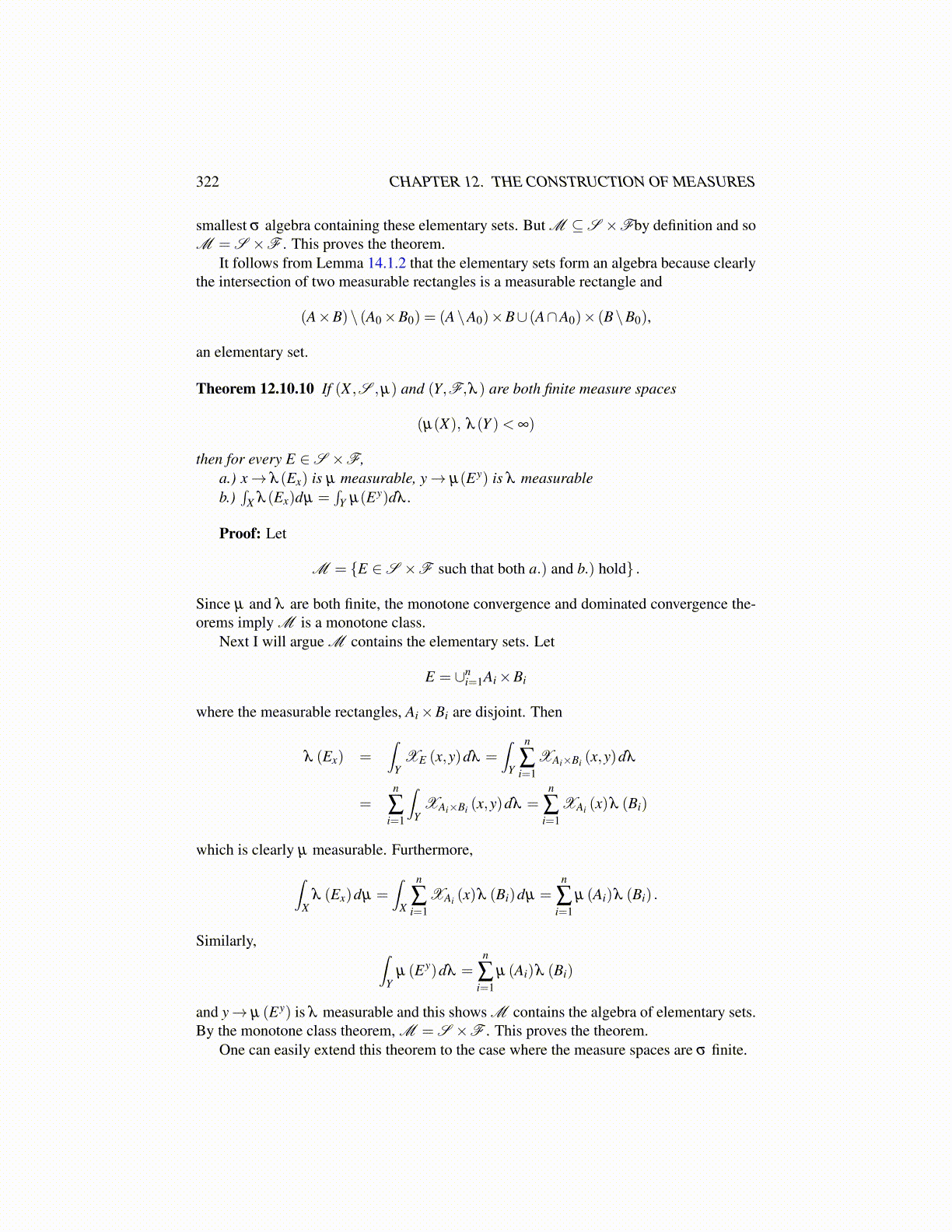
322 CHAPTER 12. THE CONSTRUCTION OF MEASURES
smallest σ algebra containing these elementary sets. But M ⊆S ×Fby definition and soM = S ×F . This proves the theorem.
It follows from Lemma 14.1.2 that the elementary sets form an algebra because clearlythe intersection of two measurable rectangles is a measurable rectangle and
(A×B)\ (A0×B0) = (A\A0)×B∪ (A∩A0)× (B\B0),
an elementary set.
Theorem 12.10.10 If (X ,S ,µ) and (Y,F,λ ) are both finite measure spaces
(µ(X), λ (Y )< ∞)
then for every E ∈S ×F,a.) x→ λ (Ex) is µ measurable, y→ µ(Ey) is λ measurableb.)∫
X λ (Ex)dµ =∫
Y µ(Ey)dλ .
Proof: Let
M = {E ∈S ×F such that both a.) and b.) hold} .
Since µ and λ are both finite, the monotone convergence and dominated convergence the-orems imply M is a monotone class.
Next I will argue M contains the elementary sets. Let
E = ∪ni=1Ai×Bi
where the measurable rectangles, Ai×Bi are disjoint. Then
λ (Ex) =∫
YXE (x,y)dλ =
∫Y
n
∑i=1
XAi×Bi (x,y)dλ
=n
∑i=1
∫Y
XAi×Bi (x,y)dλ =n
∑i=1
XAi (x)λ (Bi)
which is clearly µ measurable. Furthermore,∫X
λ (Ex)dµ =∫
X
n
∑i=1
XAi (x)λ (Bi)dµ =n
∑i=1
µ (Ai)λ (Bi) .
Similarly, ∫Y
µ (Ey)dλ =n
∑i=1
µ (Ai)λ (Bi)
and y→ µ (Ey) is λ measurable and this shows M contains the algebra of elementary sets.By the monotone class theorem, M = S ×F . This proves the theorem.
One can easily extend this theorem to the case where the measure spaces are σ finite.